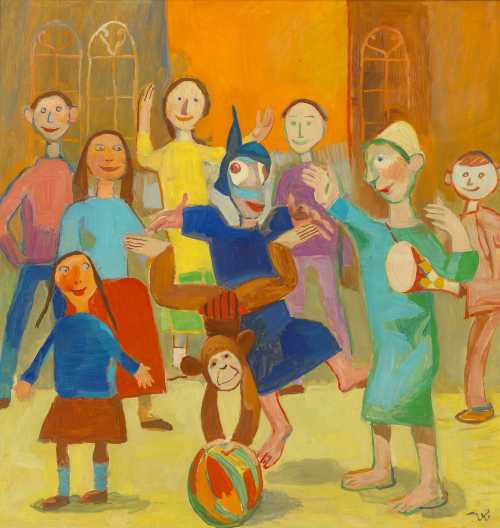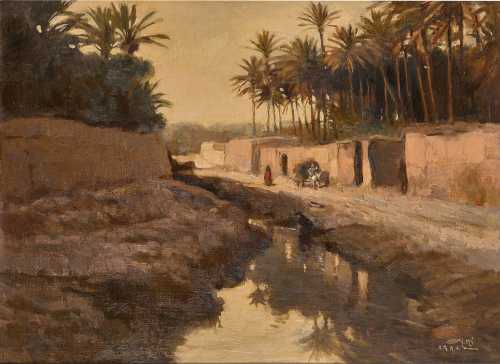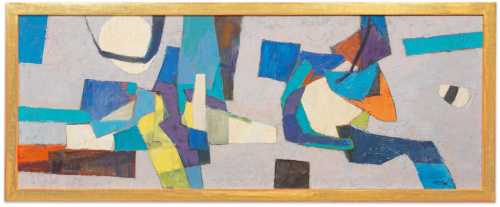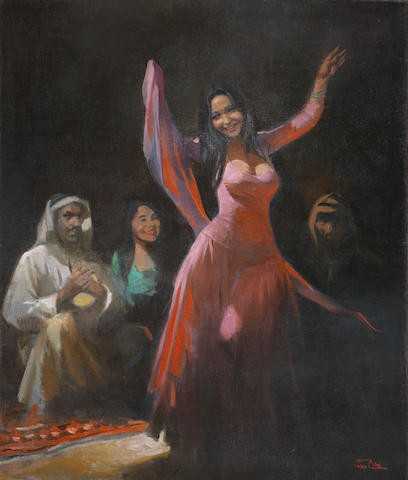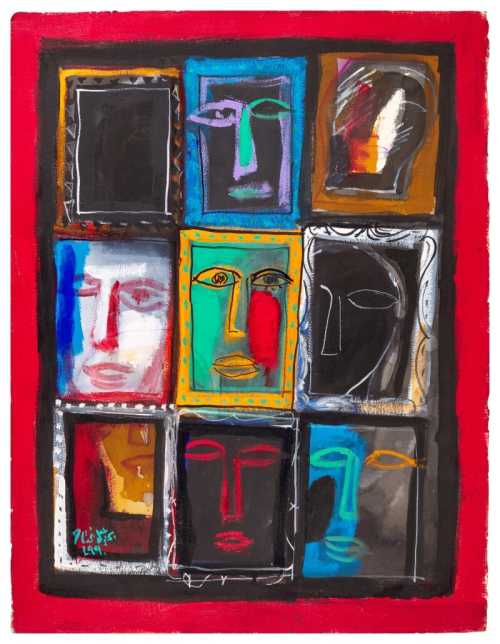- The Clown 1960 - 1969
- Oil on canvas
- Painting
- 645 * 67.5 cm
- signed in Arabic (lower right)
20 October 2021
Estimation
£25,000
34,540 USD
-
£30,000
41,448 USD
Unsold
Artwork Description
The present work represents the versatility in Faeq Hassan's oeuvre- as he shifted between inspirations from Cubism, Impressionism and Abstract art. Hassan is notable within Iraq as an arts educator, and as founder of the Institute of Fine Art's painting department. Known for his depictions of everyday life, as presented in the works within the Orin and Rita Collection, the artist also produced works with more specific themes, such as the present lot The Clown, which the current owner received for her birthday directly from the artist who was regularly in touch with the family. Depicted in vivid colours, this work explores the artist's true form as a master of colour and captures the spirit of everyday Iraqi life - in this case, the conviviality of the party scene that draws clear influence from the saturated colours and lines of Matisse, as found in the shading of the clothing, the contours of their faces and the overall curved forms that appear throughout.
Faeq Hassan was a prolific artist and inspiring educator who devoted his life to painting, his career and oeuvre could be considered a unique case study for art education in modern nation states like Iraq. Hassan’s talent was noticed by King Faisal I, founder of the modern Iraqi state, and awarded a scholarship to study in Europe; from 1935 he received a traditional art education in Paris while experiencing the excitement of European modernism, as exemplified by Matisse among others during his five years in France.
Faeq Hassan is credited with forming one of the first art groups in Iraq in the late 1940s under the name Société Primitive, also known as Ar-Ruwaad (The Pioneers) who held their first group exhibition in 1950. Between the onset of art education in Iraq in 1939 to the maturation of a significant national art movement in the mid-1960s, Hassan enjoyed a dynamic competitive interaction with two other artist-educators: Jewad Selim (1919-1961) and Hafidh Al-Droubi (1941-1991) and their respective art groups, Baghdad Modern Art (1951) and the Impressionists (1953). During this period, Hassan experimented with different art styles while concentrating on themes of the Iraqi locale.
More lots by Faegh Hassan
Realized Price
55,040 USD
Min Estimate
24,010 USD
Max Estimate
39,438 USD
Average Artwork Worth
+73.687%
Average Growth of Artwork Worth
Sales Performance Against Estimates
Average & Median Sold Lot Value
2021 - 2025
Performance vs. Estimate
2021 - 2025
Sell-through Rate
2021 - 2025
